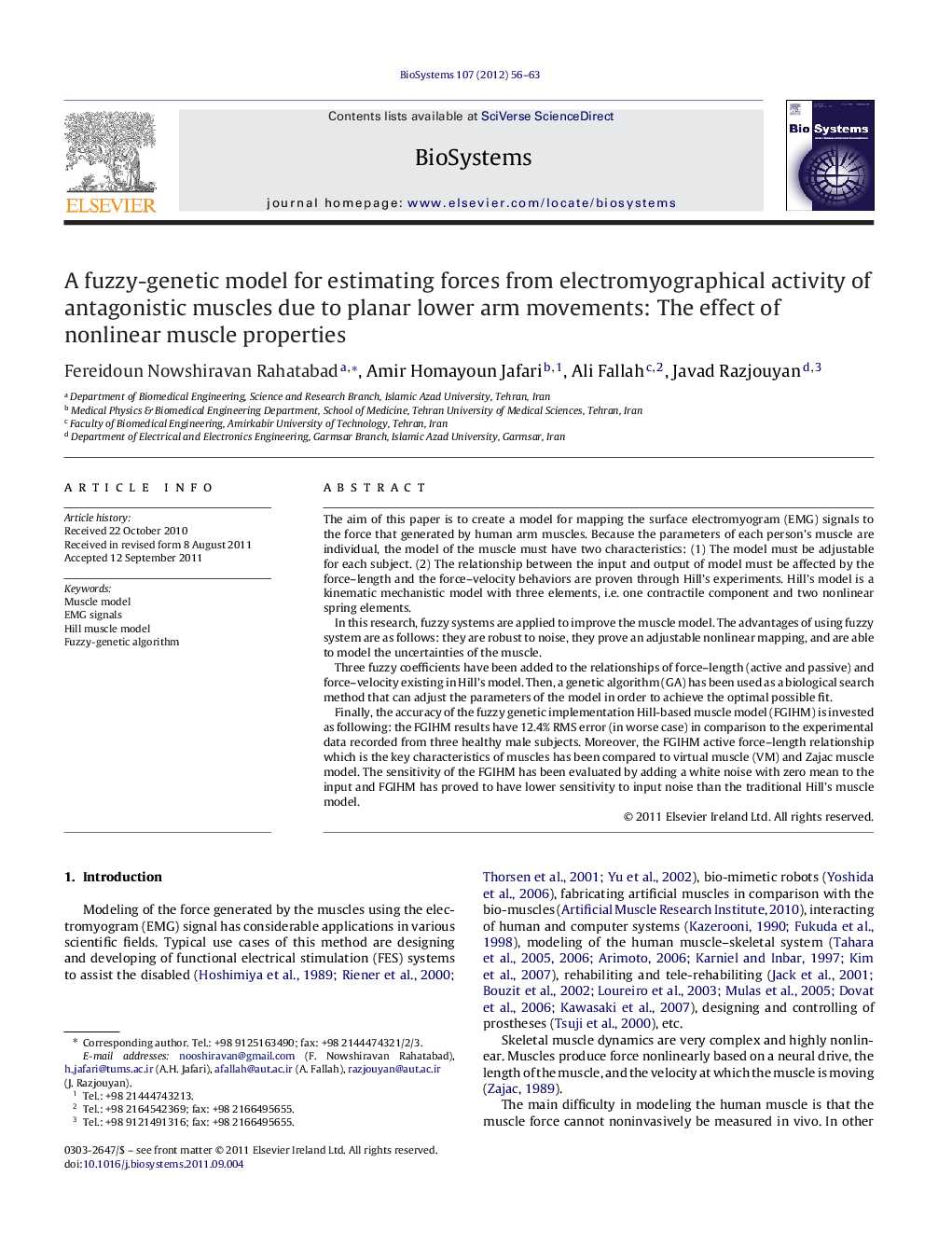| Article ID | Journal | Published Year | Pages | File Type |
|---|---|---|---|---|
| 2076146 | Biosystems | 2012 | 8 Pages |
The aim of this paper is to create a model for mapping the surface electromyogram (EMG) signals to the force that generated by human arm muscles. Because the parameters of each person's muscle are individual, the model of the muscle must have two characteristics: (1) The model must be adjustable for each subject. (2) The relationship between the input and output of model must be affected by the force–length and the force–velocity behaviors are proven through Hill's experiments. Hill's model is a kinematic mechanistic model with three elements, i.e. one contractile component and two nonlinear spring elements.In this research, fuzzy systems are applied to improve the muscle model. The advantages of using fuzzy system are as follows: they are robust to noise, they prove an adjustable nonlinear mapping, and are able to model the uncertainties of the muscle.Three fuzzy coefficients have been added to the relationships of force–length (active and passive) and force–velocity existing in Hill's model. Then, a genetic algorithm (GA) has been used as a biological search method that can adjust the parameters of the model in order to achieve the optimal possible fit.Finally, the accuracy of the fuzzy genetic implementation Hill-based muscle model (FGIHM) is invested as following: the FGIHM results have 12.4% RMS error (in worse case) in comparison to the experimental data recorded from three healthy male subjects. Moreover, the FGIHM active force–length relationship which is the key characteristics of muscles has been compared to virtual muscle (VM) and Zajac muscle model. The sensitivity of the FGIHM has been evaluated by adding a white noise with zero mean to the input and FGIHM has proved to have lower sensitivity to input noise than the traditional Hill's muscle model.
